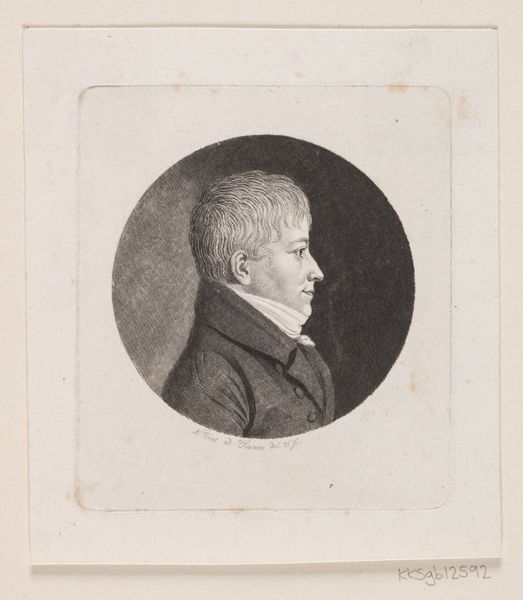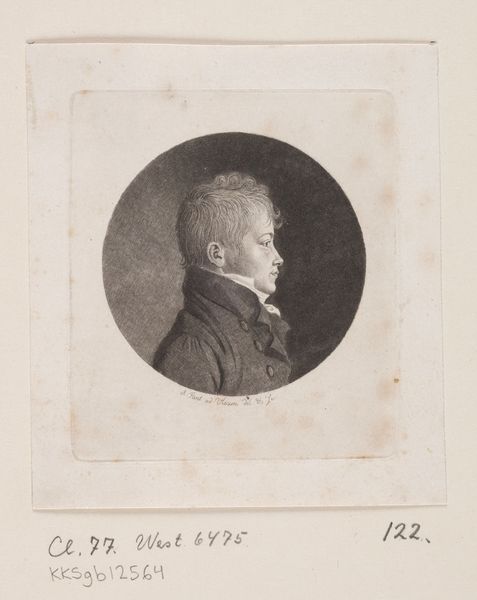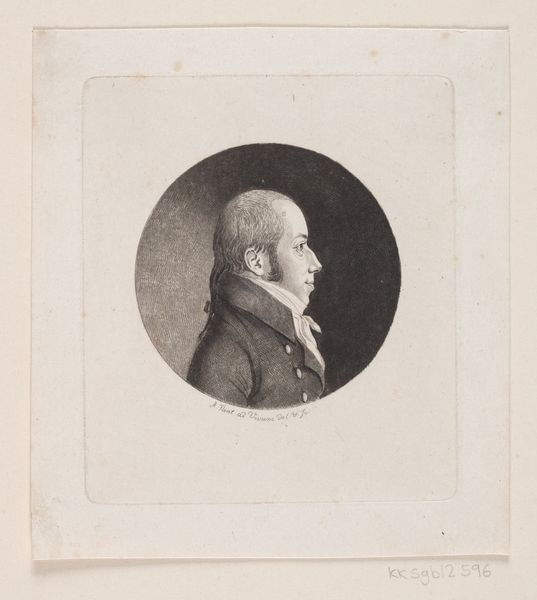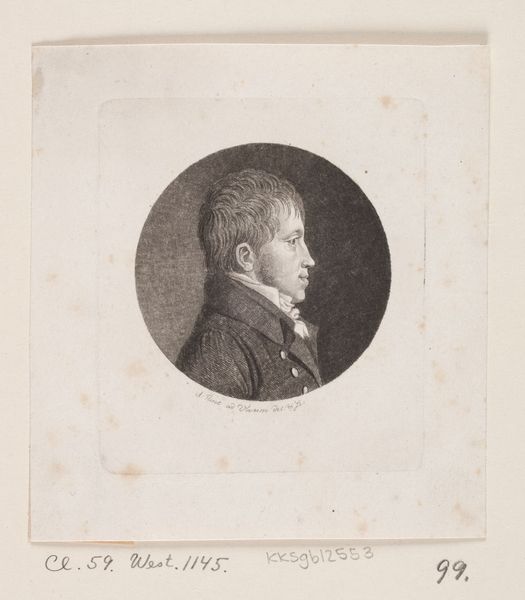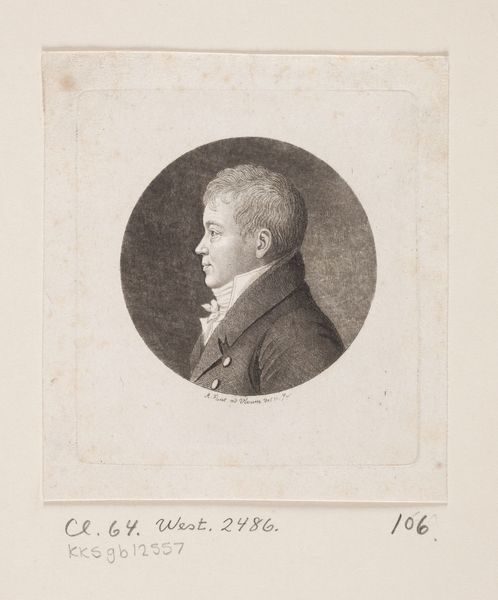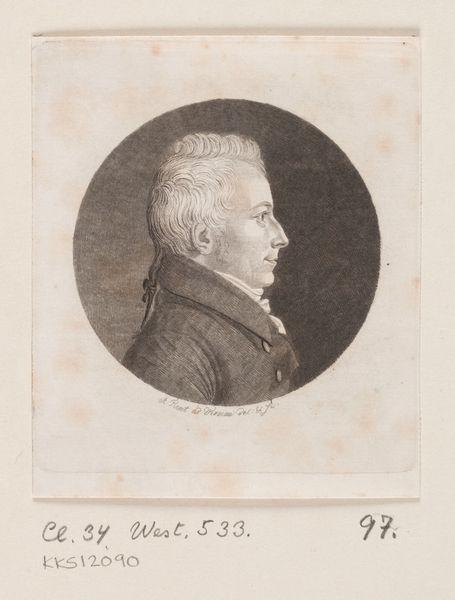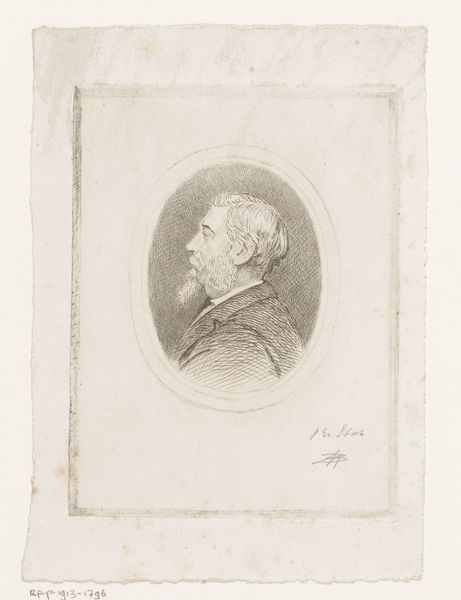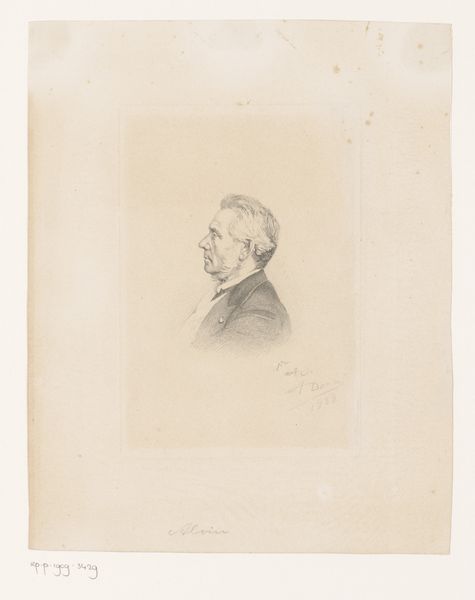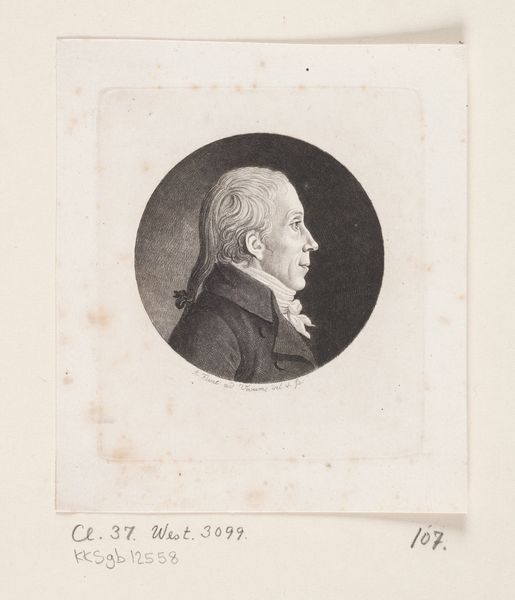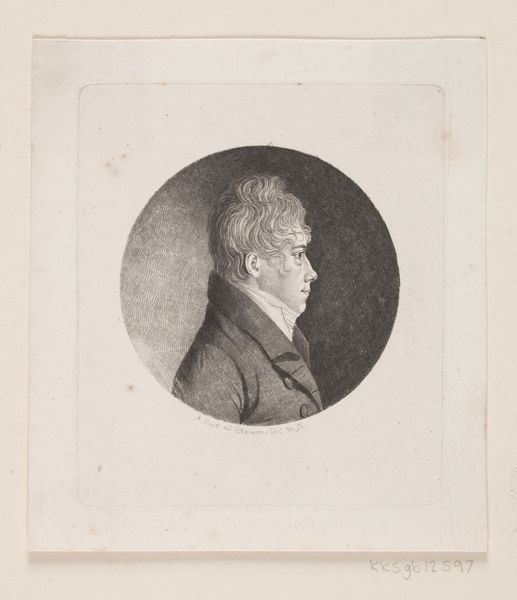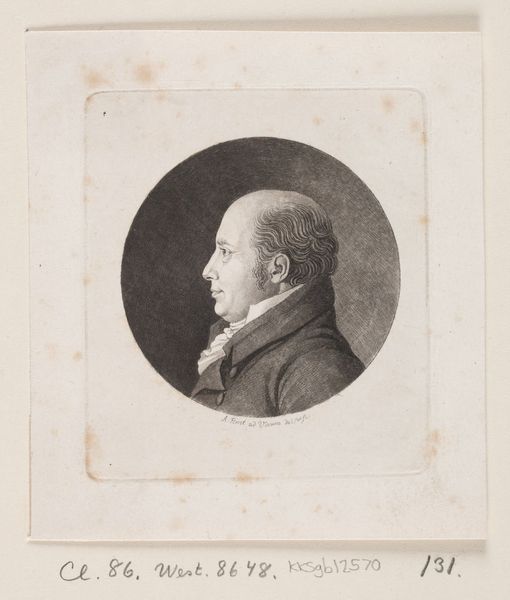
print, engraving
#
neoclacissism
# print
#
history-painting
#
engraving
Dimensions: 61 mm (None) (billedmaal), 92 mm (height) x 79 mm (width) (plademaal)
Editor: This is an engraving, "Preben Bille-Brahe," created sometime between 1767 and 1824. It feels like a classical profile, almost like a coin. The starkness makes me wonder what kind of message it conveys. How do you interpret this work? Curator: I see a carefully constructed image designed to convey a specific idea about Preben Bille-Brahe. The profile view itself evokes classical antiquity, connecting him to a lineage of respected figures. The precision of the engraving and the circular frame around the portrait -- does that circular form remind you of anything in particular? Editor: Now that you mention it, that circle could certainly be mimicking a classical medallion. It definitely elevates the subject. Curator: Precisely. These elements are carefully chosen to project an image of nobility, intellect, and perhaps even civic virtue, key values in that Neoclassical era. Notice how the gaze is directed forward. How might that be interpreted in relation to the rest of the engraving's composition? Editor: It does look determined and forward-looking, projecting strength. I hadn't considered the cultural context so specifically, but now I see how every choice supports the overall message of elevated status. Curator: Indeed. And that's often the role of portraiture, especially within Neoclassical art – to immortalize and idealize. Visual symbols work to enforce meaning. It serves as a cultural record and a psychological projection of how the sitter wished to be seen. Editor: I learned that even a seemingly simple portrait can be loaded with cultural and historical information that influences how we read the image. Curator: Precisely. And hopefully, encourages you to think about what any image projects outward into the world, and what it obscures.
Comments
No comments
Be the first to comment and join the conversation on the ultimate creative platform.
